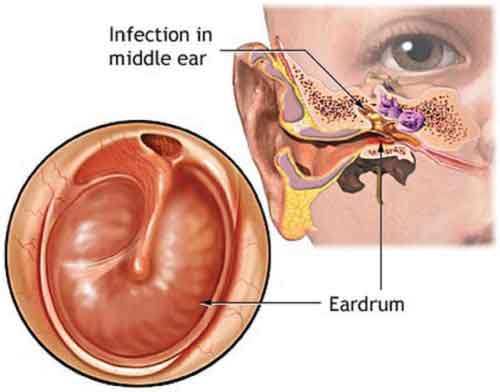Obstacles in Care
Otitis Media, if untreated, may lead to total hearing loss. Poverty, ignorance regarding the illness and availability of treatment, inappropriate treatment, high expenditure on treatment are some of the factors that compound the woes of patients
By Dr. Suneela Garg, Dr. G S Meena, Dr. Anshul Shukla
More than 360 million persons in the world live with disabling hearing loss with approximately 20% of the world’s adult population afflicted with some degree of hearing loss. Also, over 17 million people in the world are profoundly deaf.
Around the world up to 330 million persons affected by Chronic Suppurative Otitis Media account for 5 million DALYs. The prevalence of the same ranges from 1% in developed countries to 46% among certain populations with 90% of the burden being borne by countries of South-East Asia and Western Pacific Regions, Africa and ethnic minorities of Pacific Rim.
Otitis Media can lead to disabling hearing loss in up to 60% of cases and accounts for nearly 28,000 deaths annually. Studies in developed countries show that by their third birthday 80% of children experience at least one episode of Acute Otitis Media (AOM) and 40% have six or more recurrences by the age of seven years. On turning our focus to India, multiple studies have shown high prevalence of Otitis Media in India with more than 6% experiencing the disorder. If we look amongst school children, 10% to 20% have had at least one episode of Otitis Media. Also the burden of the disease in slums is more than in well sanitized urban cities.
The most important factor to consider is that the outcome of Otitis Media is total hearing loss, if it remains untreated. So, what are the factors which act as barriers to seeking effective care and treatment which leads to such an ever increasing burden?
The factors which lead to such a problem statement include a lack of motivation for treatment, inadequate screening and preventive care, late access to health care facilities and as a consequence seeking incomplete or no treatment.
OTITIS MEDIA : SOCIAL DETERMINANTS AND EFFECTS
The barriers can be at multiple levels:
Looking at the accessibility of the Healthcare facility there could be possible barriers with respect to availability of providers, proximity of healthcare facility, operating hours of work and also the availability of transport facility. There is also a large mass which is unaware of the available resources and services. Whereas the problems at the healthcare facility are of a different nature like long waiting time for appointments, time constraint of physician, lack of interpreter services, lack of appropriate signage for patient guidance and very importantly poor continuity of care and the language used for health education.
To overcome these problems the healthcare facility should have the following ‘As’ like available, accessible, acceptable, affordable, adaptable, applicable, appropriate, advice, assurance and attitude of the administration.
At an individual level the barriers to prevention and seeking care are manifold like illiteracy, poverty, ignorance regarding the illness and availability of treatment, inappropriate treatment, high and ever rising out of pocket expenditure and the wage loss with prolonged treatment.
Is the picture so grim or we have hope of overcoming these barriers? Well, yes there is hope and it needs to be tackled at various levels. What is most important is to motivate the patients and the care givers and also the community at large about risk factors, symptoms and seeking effective care through the means of effective Information, Education and Communication (IEC).
As with any healthcare provider there needs to empathy with the patient, giving a personal touch and building rapport. Also there needs to be increased focus on diagnosis and management and patients should be explained the same patiently and give assistance and help. Patient satisfaction, addressing their expectations, fears and explaining about outcome of treatment are some concerns that need to be addressed. The cornerstone for success of any of these interventions is a good rapport between the doctor and the patient. And lastly compliance and continuity of care is essential and this needs efforts at all levels and from all the stakeholders involved.
With increasing awareness generation regarding the various barriers to care for Otitis Media, there is an ever increasing need to overcome the hurdles in the path of conquering this menace.
(The authors are from Department of Community Medicine, Maulana Azad Medical College, New Delhi)

